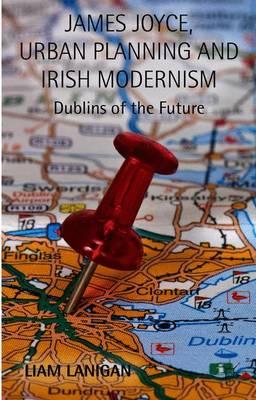Overview
Irish writing in the modernist era is often regarded as a largely rural affair, engaging with the city in fleeting, often disparaging ways, with Joyce cast as a defiant exception. This book shows how an urban modernist tradition, responsive to the particular political, social, and cultural conditions of Dublin, emerged in Ireland at this time.
Full Product Details
Author: L. Lanigan
Publisher: Palgrave Macmillan
Imprint: Palgrave Macmillan
Dimensions:
Width: 14.00cm
, Height: 1.90cm
, Length: 21.60cm
Weight: 4.238kg
ISBN: 9781137378194
ISBN 10: 1137378190
Pages: 243
Publication Date: 08 August 2014
Audience:
College/higher education
,
Postgraduate, Research & Scholarly
Format: Hardback
Publisher's Status: Active
Availability: In Print

This item will be ordered in for you from one of our suppliers. Upon receipt, we will promptly dispatch it out to you. For in store availability, please contact us.
Reviews
“James Joyce, Urban Planning and Irish Modernism is effectively divided into two parts, with the first focusing upon Irish Modernist fiction before Joyce, and the second examining Joyce and his aftermath. … this is an assured and incisive intervention in both Joycean and Irish studies scholarship, offering a unique insight into the hitherto obscured intersections of Irish literature and Irish planning.” (Stephen O’Neill, Notes and Queries, Vol. 63 (3), September, 2016) “Lanigan’s book offers to Joyce scholars several useful new contexts in which to reread, and rediscover, Joyce’s fictions. It also suggests, to scholars of Irish literature or urban literature, new ways to think about literary representations of Dublin before and after Joyce.” (Michael Rubenstein, James Joyce Quarterly, Vol. 53 (1-2),2015-2016) “This study provides a useful historic reminder of architectural modes and issues and recalls the first professional manifestation of town planning in Ireland … . this is an essential … addition to the burgeoning analysis of the birth pangs of Irish town planning.” (Fergal MacCabe, Pleanáil, Issue 21, 2015-2016)
James Joyce, Urban Planning and Irish Modernism is effectively divided into two parts, with the first focusing upon Irish Modernist fiction before Joyce, and the second examining Joyce and his aftermath. ... this is an assured and incisive intervention in both Joycean and Irish studies scholarship, offering a unique insight into the hitherto obscured intersections of Irish literature and Irish planning. (Stephen O'Neill, Notes and Queries, Vol. 63 (3), September, 2016) Lanigan's book offers to Joyce scholars several useful new contexts in which to reread, and rediscover, Joyce's fictions. It also suggests, to scholars of Irish literature or urban literature, new ways to think about literary representations of Dublin before and after Joyce. (Michael Rubenstein, James Joyce Quarterly, Vol. 53 (1-2), 2015-2016) This study provides a useful historic reminder of architectural modes and issues and recalls the first professional manifestation of town planning in Ireland ... . this is an essential ... addition to the burgeoning analysis of the birth pangs of Irish town planning. (Fergal MacCabe, Pleanail, Issue 21, 2015-2016)
This study provides a useful historic reminder of architectural modes and issues and recalls the first professional manifestation of town planning in Ireland ... . this is an essential ... addition to the burgeoning analysis of the birth pangs of Irish town planning. (Fergal MacCabe, Pleanail, Issue 21, 2015-2016) James Joyce, Urban Planning, and Irish Modernism makes a worthy contribution to scholarship on the city of Dublin as central to 'local,' nationalist, and internationalist dimensions of Irish modernist production. Lanigan's examination of the theory and practice of urban planning in the production of Irish literary culture (material, narratological, and conceptual) fills a significant gap in Joyce studies, modernist studies, and studies of modern Irish literature. - Desmond Harding, Central Michigan University, USA
James Joyce, Urban Planning, and Irish Modernism makes a worthy contribution to scholarship on the city of Dublin as central to 'local,' nationalist, and internationalist dimensions of Irish modernist production. Lanigan's examination of the theory and practice of urban planning in the production of Irish literary culture (material, narratological, and conceptual) fills a significant gap in Joyce studies, modernist studies, and studies of modern Irish literature. - Desmond Harding, Central Michigan University, USA
Author Information
Liam Lanigan is an IRC Postdoctoral Research Fellow at University College Cork, Ireland. He has previously taught at NUI Maynooth, the University of Kaposva'r, Hungary, and University College Dublin.




